BUYSMARTER is an AI and Natural Language Processing (NLP) based application that can be defined as “Category Management on Steroids” using AI to provide the U. S. Department of Health and Human Services (HHS) with the highest level of analysis of the entire department’s contract data seen in the federal acquisitions space. Unissant has led the design, development, testing, and deployment of the BUYSMARTER Application, and the Full Contract Scan AI tool within it, to successfully facilitate Enterprise Acquisitions at HHS.
BUYSMARTER maximizes the collective purchasing power of HHS to establish a cohesive acquisition structure across HHS in order to drive better pricing and achieve better terms and conditions, while consolidating the total number of contracts for both HHS and its vendors, and shifting acquisition staff-time to higher priority, mission-critical work. The genesis of BUYSMARTER is rooted in the release of Memo M-17-22 from the Office of Management and Budget (OMB). This memo required each agency to submit a reform plan to improve the efficiency, effectiveness, and accountability of their respective agencies and their programs.
Additionally, each agency was to develop an analytical framework that examines how the activities of the agency align with its mission. At HHS this has led to the development of the BUYSMARTER Full Contract Scan AI Tool. The BUYSMARTER application has been awarded the Disruptive Technology Award in 2020 and it is now an operational program within HHS.
BUYSMARTER leverages the human experience of agencies working together to achieve cost savings and bring improvements to mission capabilities. The key word is “together” and, as illustrated in the figure below, the AI Full Contract Scan tool enhances that “together” experience.

BUYSMARTER enables the 26 operating and staff divisions within HHS to operate as a singular buying entity by bringing all HHS contracting data together and then deploy AI to empower the HHS acquisition community with powerful analytical, collaboration, and negotiation capabilities.
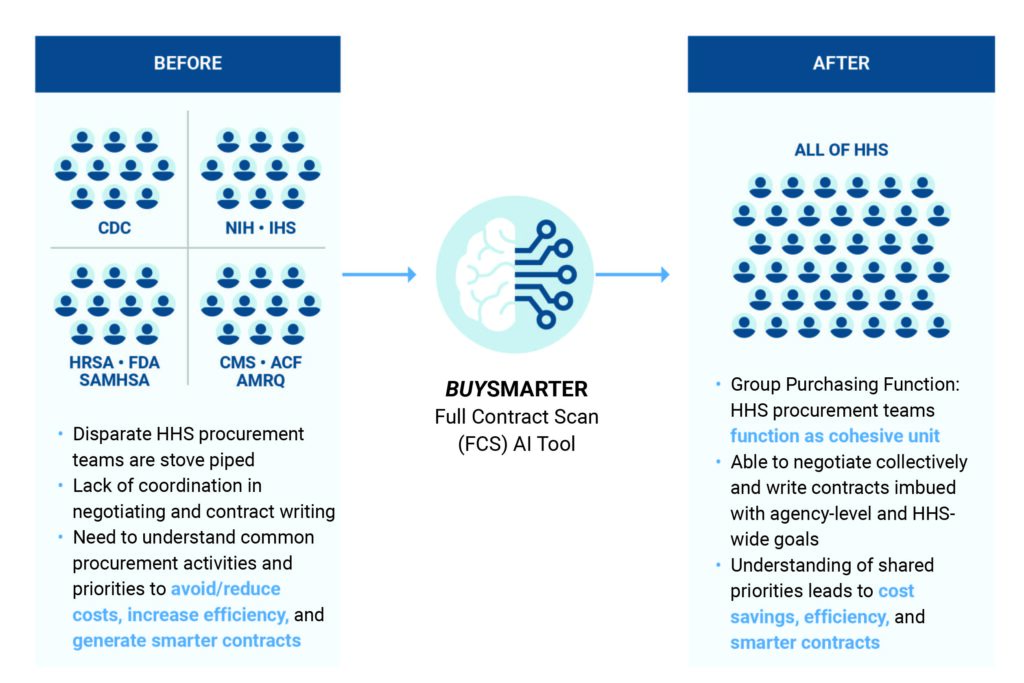
The Full Contract Scan AI tool gives the Category Collaborative Purchasing teams an entirely new capability to understand where the most spend is happening, where divisions are contracting for the same things, what terms and conditions were available, and where the differences in prices paid are the most pronounced. Having the ability to review the entire department’s spend within a category, its sub-categories and down to the specific products and services allows the agencies to make sound, logical decisions as to whether to pursue an enterprise acquisition for that product or service.
The tool was designed to be very simple to use based on familiar tools that we use regularly. Per the graphic below, the process follows a simple TurboTax style step-by-step process, the search function looks like a regular Google Search and the output looks and works just like Excel.
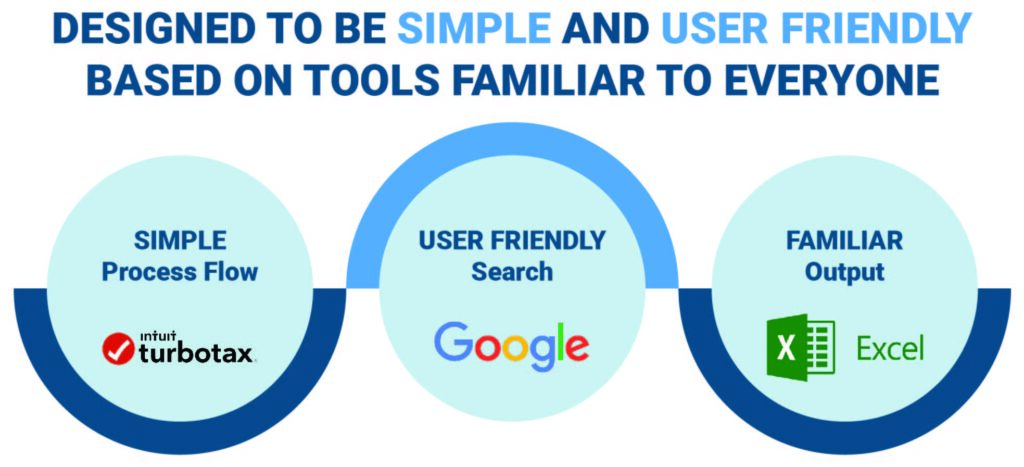
The AI is designed to search for information in the same manner you and I would – by making associations within and between the things we are searching for that make sense. This is known as an “inferential model.” Given the learning nature of AI, the tool will get better and smarter every time it is used. The tool currently processes over 1 million contract attachments in under 8 seconds.
The Full Contract Scan process flow, highlighted in the graphic below, walks users through each step to narrow the search funnel in order to direct the AI engine on where to look and what it should find.
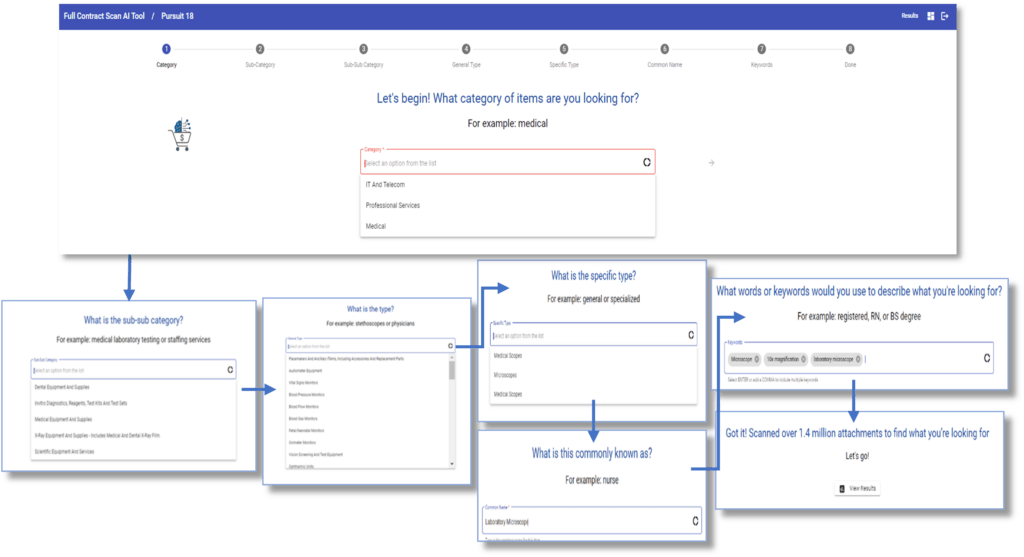
The search screens have been designed with a simple look and feel where the user is led through each step with plain English questions and examples. As the user moves through each step of the sequence, the tool begins to pre-populate what fits within that search parameter. The more search parameters the user inputs into each step the more the AI tool will narrow the focus on exactly what is being sought.
The Output tool, shown in the graphic below, displays all the key variables that the teams will need to master throughout the acquisition process.
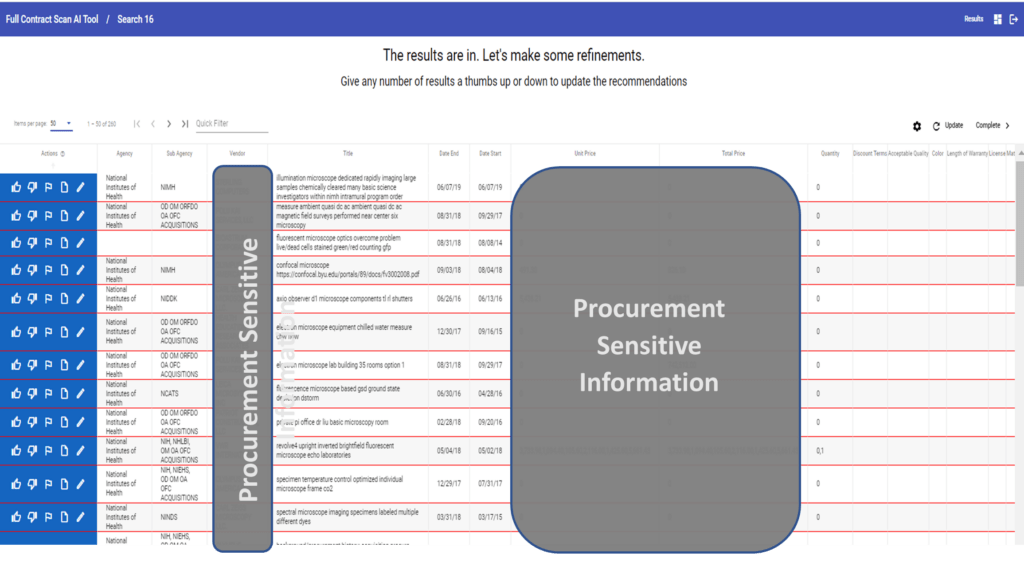
The number and type of variables is based on the category and type of product, equipment, or service being targeted (the number of variables span between 14 and 81 independent criteria). The actual contract language can be viewed as well. Users can Sort, Hide, and Filter any column just like in Excel to target the data of interest.
A key truth about AI is that it simply is not smart enough in the beginning. It must be ‘taught’ what it should or should not select as a result. The tool has a capability for the users to make the tool ‘smarter’ through a teaching tool. Once the first set of contracts is produced in the Results screen, the users will then step through an exercise of determining which contracts fit their search criteria. Each time the “Thumbs-Up/Thumbs-Down” flagging is complete, the AI tool re-runs and updates the results as it further “learns” marking usefulness with red as less, green as more, and blue as worthy of further investigation, as shown in the graphic below. This process is repeated until the final full and correct set of results are produced.
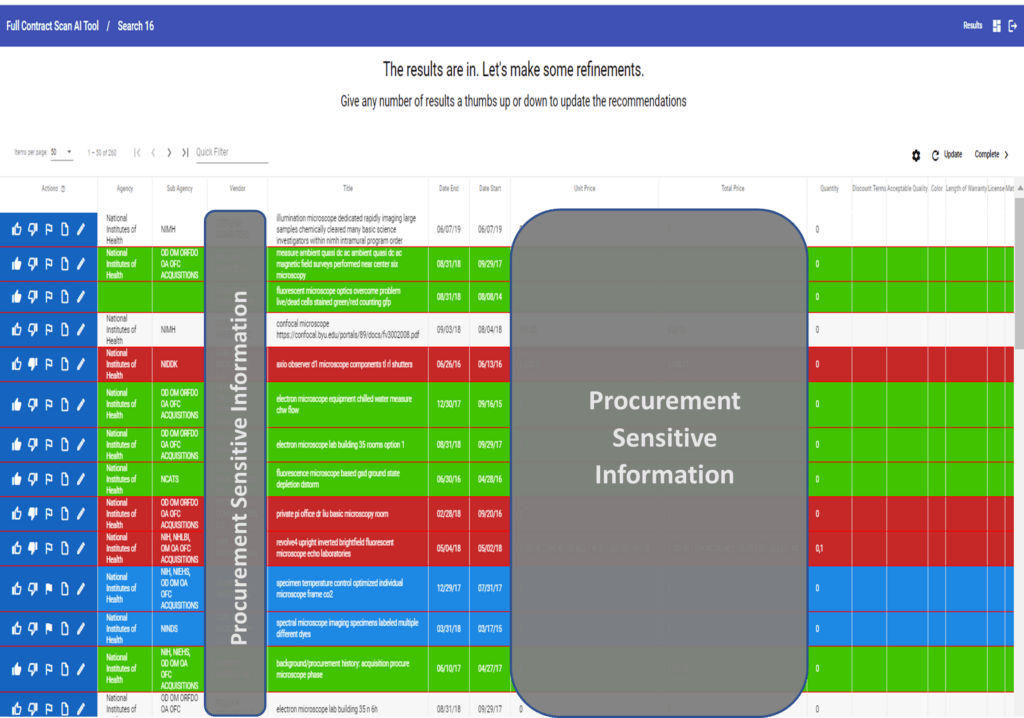
This leading-edge application of AI, that Unissant has developed and implemented at HHS, can be applied across federal departments right now to streamline, and reduce the costs of procurements, as well as make better use of taxpayers’ money and improve the acquisition process.
Contact Information:
Kenneth P. Bonner, MHA, LFACHE
President & Chief Growth Officer (CGO)
Unissant
202.407.3704
[email protected]
Macon Hardy
Senior Vice President
Unissant
202.821.6624
[email protected]


